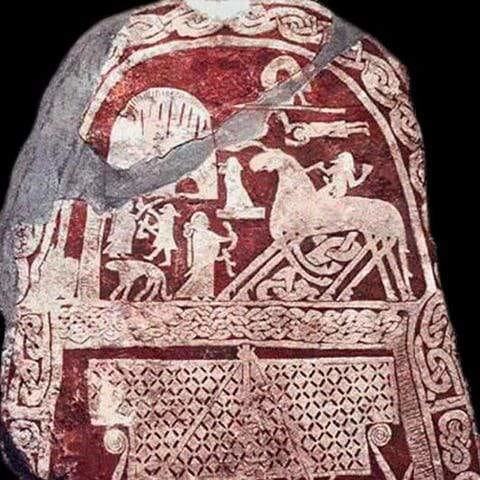Viking Art
The prominent character of Scandinavian art in the Viking period is either of cultural and religious origin or purely ornamental. In fact, in the majority of cases, Viking art is expressed in the decoration of everyday objects, reflecting the decorative expression of the craftsmanship.
Almost any material can be decorated, walrus ivory, stone, precious metals, wood. Ceramics, on the other hand, has a rather poor formal record.
Viking art is characterized by a mixture of ornamental elements from the repertoire of Scandinavian tradition and motifs from foreign sources. The artistic borrowings come mainly from Anglo-Saxon decorations and Carolingian and Ottonian ornamental art, transmitted through numerous contacts fostered, among others, by trade and missionaries from neighbouring cultural fields.
However, oriental decorative art was copied very little in Scandinavia and Russian art, Byzantine or Slavic, had no particular echoes on the evolution of Scandinavian art in the Viking Age.
The pattern of the Viking styles consists of different kinds of motifs:
- The zoomorphic motifs (mainly quadrupeds, birds and snakes), which are survivals of earlier native animal representations, are predominant and fundamental.
- The geometric motifs (interlacing, spirals) have an accessory decorative function, and are confined to the periphery of figurative representations or are a filling element within a composition.
- Botanical motifs (tendrils, leaves and palmettes), borrowed from the Anglo-Saxon repertoire (the vine) and from the Carolingian and Ottonian repertoire (acanthus leaves), also have an accessory decorative function.
- The anthropomorphic representations are isolated and have no decisive stylistic significance.
VIKING ART STYLES CHRONOLOGY
Viking art styles developed in both geographical and chronological stages, from the beginning of the 9th century to the second half of the 11th century, disappearing with the flourishing of Romanesque art.
Broa: 750 to 825
Berdal/Oseberg: 800 to 875
Borre: 850 to 950
Jelling: 900 to 975
Mammen: 950 to 1025
Ringerike: 1000 to 1075
Urnes: 1050 to 1125
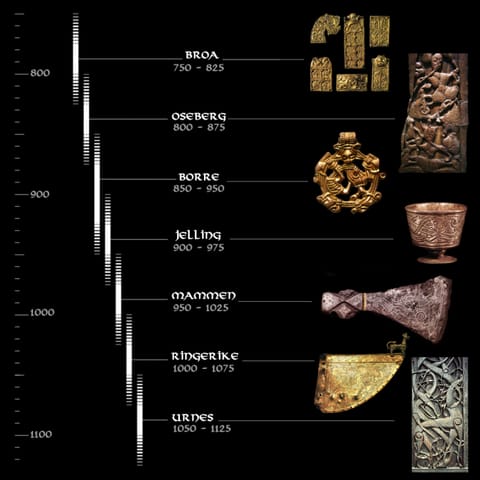
Art styles overlap, with two and sometimes three styles remaining in popularity at the same time.
STYLES OF VIKING ORNAMENTAL ART
BROA STYLE, 750 - 825
It indicates the very first phase of Viking art and still has many affinities with the Nordic animal decoration (Salin III style).
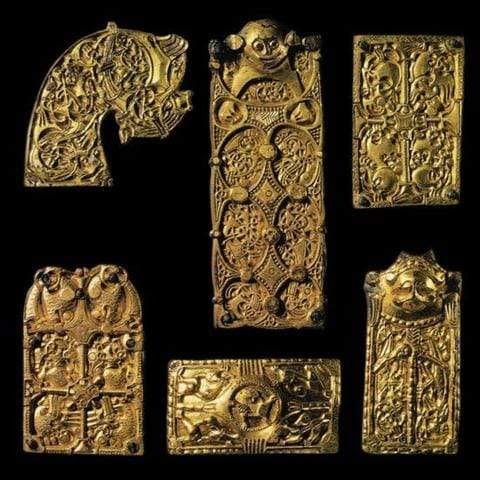
Broa's Style Features
The surfaces to be decorated are divided into several areas, each one decorated with a particular pattern.
The animal is the main subject and comes in 3 variations:
1. An animal with a knotted body, with S-shaped contours, with a pronounced exaggeration of the chest and the leg joint; its silhouette often dislocates and lengthens to create a rather loose lattice that occupies the allotted surface.
2. An animal whose representation is more naturalistic and more widespread in the illuminations, bronzes and goldsmiths of continental civilizations.
3. An animal figure known as the "Greiftier" or grasping beast, generally an animal of the feline family, which spreads its legs around it in order to clasp the closest. animal figures. The very similar pattern of the squirrel in the Anglo-Saxon ornamental repertoire may have been the origin of this fabulous being.
BERDAL /OSEBERG STYLE , 800 - 875
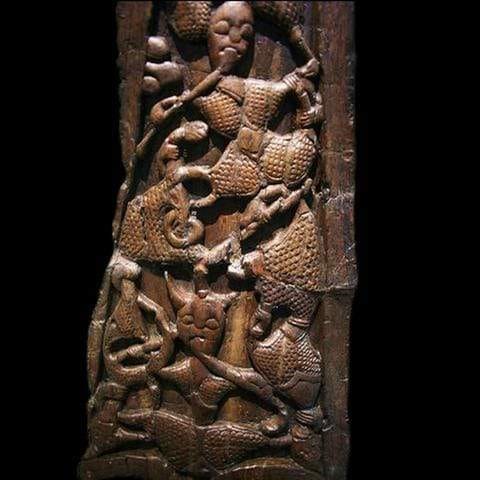
Berdal/Oseberg Art Features
- The repetition of the motifs of the "Greiftier" which create a wallpapering decoration.
- Parts of the body (upper body, belly and thighs) are accentuated and linked together by a network of thin sticks.
- The ears are often exfoliated.
- The heads, disproportionate and triangular, are represented from the front or in plunging view.
BORRE STYLE, 850 - 950
It is the first Viking style to spread to areas within the Scandinavian area of influence.
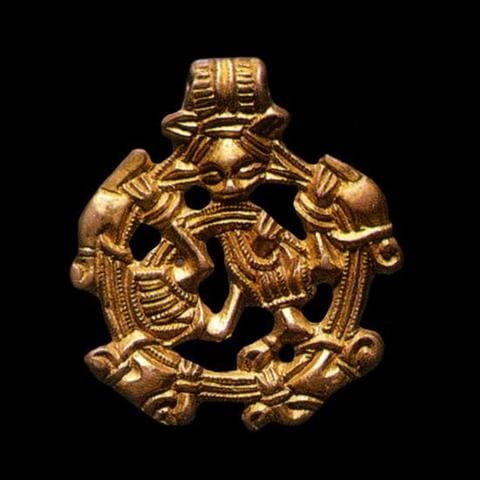
Borre Art Features
- The "Greiftier" motif is undergoing a significant transformation. The animal representation with a naturalist tendency and the braided knotted motifs borrowed from Western Europe are privileged, "reviewed and corrected" to create a very particular type of frieze.
- The triangular-shaped heads have huge ears and are represented in a frontal way; but these beings no longer occupy the space with as much force and form, by the coiled attitude of their body, a composition closed on itself.
- The articulation of the body is still strongly asserted.
- The paws grasp the animal's folded body so as to create a figure in the shape of a "pretzel".
- The botanical motifs are essentially derived from Carolingian models, as evidenced by archaeological finds of belt trimmings and three-lobed and lanceolate swords decorated with acanthus leaves.
> Borrre's style is the oldest Scandinavian style that was adopted in Iceland, England, and Russia.
The interlace of Gaut
In Great Britain, an island form of the Borre style developed, known as the "interlace of Gaut". This style takes its name from the Gaut Cross, discovered on the Isle of Man. Gaut is also the first name of a known Viking artist.
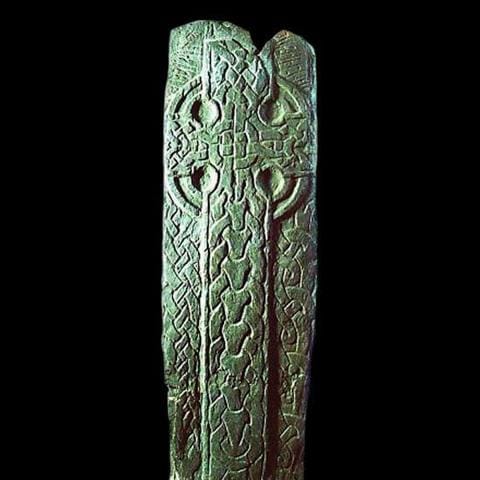
JELLING STYLE, 900 - 975
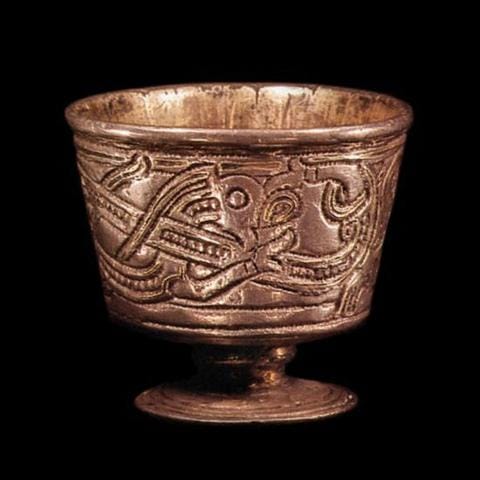
Jelling Art Features
A new variation of the animal theme, influenced by England where a number of Scandinavians settled, appears and stands out from the figure of the "Greiftier.
The animal figure is always depicted in profile and is highly stylized in an S-shape.
- The body is knotted in a diagonal symmetry.
- A tuft of hair adorns the nape of the neck.
- A spiral underlines the hip joint.
> The ornamental art of the Jelling style bears the seeds of the later evolution in which naturalistic representations imposed themselves to the detriment of the older, more abstract representation of the "Greiftier".
The treasure of Vårby
Jelling's style developed parallel to Borre's style and occasionally merged. Vårby's treasure contains a silver-plated pendant with a beast in the Jelling style, with its head in side, a knot-shaped body and a braid, but also with gripping legs in Borre's style.
MAMMEN STYLE, 950 - 1025
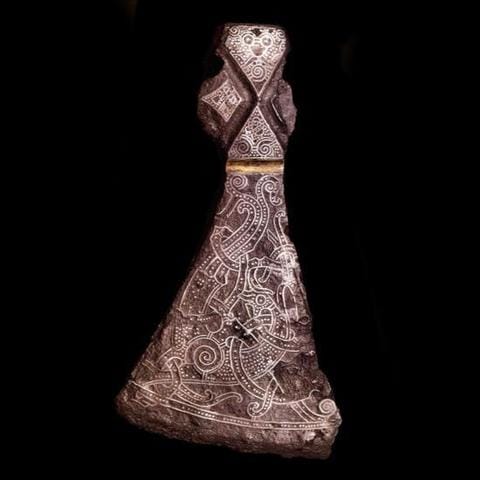
Mammen Art Features
- The anatomy of the animals depicted is still imprecise but better proportioned and therefore more identifiable (animals of prey, snakes and birds).
- Most of the animals are shown upright and with gaping mouths.
- A large spiral underlines the hip joints and the body is decorated with dots.
- Knot-like patterns intermingle with the animal figures and appear to be extensions of their own bodies (wings, tails).
- The botanical decoration - tendril-shaped stems and ribbons, coiled leaves and palmettes - is definitively established in Viking art, no longer subordinated to a central figure, but as an ornamental motif in its own right.
- At the top of Mammen's axe is a human mask that is represented with round eyes, a large nose and a spiral beard.
> Mammen's style is an evolution of Jelling's style and it can sometimes be difficult to differentiate between them.
RINGERIKE STYLE, 1000 - 1075
Ringerike Art Features
- Ringerike's style uses most of the compositional elements of Mammen's style.
- The bodies are no longer decorated inside.
- The eyes are almond-shaped instead of round.
- The curves become thinner and longer.
- The manes, puffs and frayed tails end with curled tips to blend in with the plant ornament.
- Botanical shapes are more pronounced.
-The non-figurative ornamental motifs are assembled according to rules of symmetry to create a swirling and dynamic effect that does not exist in Mammen's style.
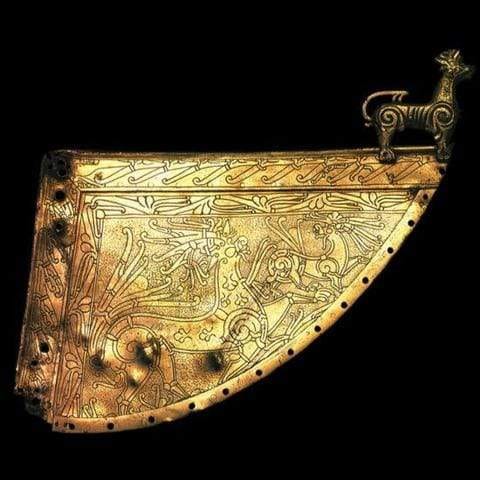
URNES STYLE, 1050 - 1125
> The Urnes style is the last phase of Viking art and is a further development of the Ringerike style characterized by the graceful interweaving of curved lines.
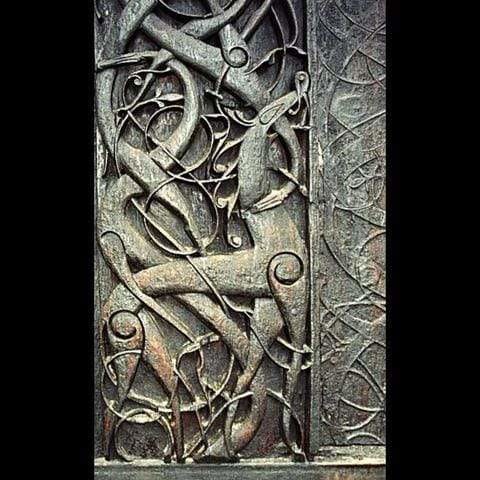
Urnes Art Features
- The main motif, in contrast to the Mammen and Ringerike styles, is essentially animal (quadrupeds including lions, filiform animals and snakes).
- The winged dragon first appeared in Scandinavia, probably under the influence of Anglo-Saxon countries.
- The head and paws become thinner and almost a thread at their ends.
- The almond-shaped eyes are slightly enlarged.
- The spiral that marks the hip is still used but less pronounced.
- The basic pattern is based on large open 8-shaped loops where other animals intertwine while biting each other.
- The cross is often used and is found on 65% of the 1100 commemorative stones in the Swedish province of Uppland.
The Urnes style was commonly used on runic stones, and the runic inscription was then inscribed in the body of the animal. An excellent example is the runestone at the Christian cross in Lingsberg (Uppland), Sweden, with two animals in the style of Urnes bearing a runic inscription.

FIGURATIVE ART
There are only rare remains of figurative art in the Viking Age, which does not mean that it was a minor art, quite the opposite.Literary sources describe scenes painted on shields or represented on embroideries and tapestries stretched in the halls of the chiefs.
TAPESTRIES
Other fragments of the tapestry of Oseberg show men, women, warriors and horsemen, as well as horses and chariots, which can as well represent a religious procession as to illustrate the time of the expansion and its great invasions.
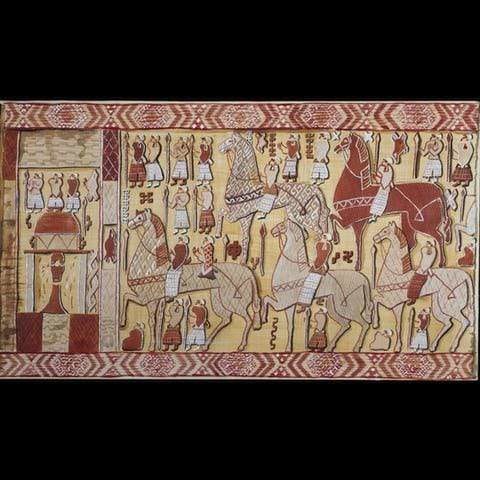
MEMORIAL STONES
On the other hand, the Gotland historiated stones present a large number of mythological and heroic scenes. In the province of Uppland (Sweden), the Altuna runic stone, erected in the 11th century, precisely illustrates the fishing myth of Thor.
Some Anglo-Scandinavian historiated stones from the northwest of England and the Isle of Man, between the IXth and the middle of the Xth century, show motifs that can be found in Scandinavia in the XIth century, consisting of hunting scenes and representations of the legend of Sigurd.
